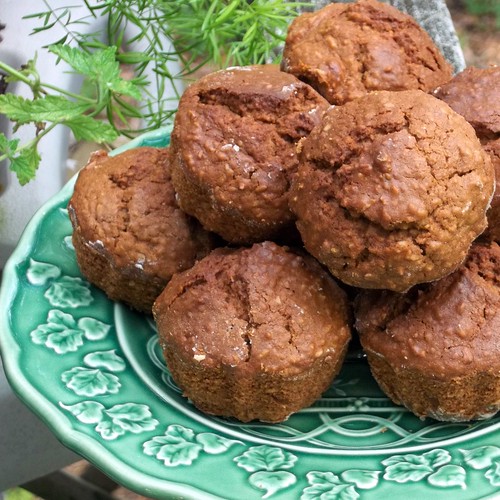The book is valuable for all sorts of reasons, but I found it particularly striking for its portrait of Scottish cooking before World War II, rationing, and the subsequent rise of cheap frozen crap. Traditional British foodways are not often counted among the casualties of the war, but they were. The British cooking that is the punchline of so many jokes is not the historic British cooking. It is the sad mess left among the ruins.
The first thing I had to try was a recipe McNeil collected as a young girl from a schoolmate in Orkney, for a sort of oatmeal gingerbread called broonie. McNeil writes that later she learned the name was originally brüni, the Norn word for a bannock. Norn was the Scandinavian language spoken in Orkney and Shetland before those islands rejoined Scotland after the marriage of James III and Margaret of Denmark in 1469. It was gradually replaced by Scots, but some words and phrases have survived.
And a bannock, of course, is the homely bread of Scotland, traditionally cooked on a girdle (griddle). Look for my experiments with that in future posts.
Broonie, though, is baked in the oven. I made this first batch in a muffin pan, but I think a loaf tin is probably more commonly used. I will try that next time, and believe me, there will be a next time. Broonie is delicious.
Notes: McNeil's recipe uses weight rather than volume and I followed that. Decent kitchen scales can be had for as little as $10 in these parts, so if you don't have one, go get one. Treacle is not the same thing as molasses, but you can substitute molasses for black treacle. I used a light molasses and a dark brown sugar in these. I strongly suggest using a stone-ground oatmeal rather than rolled oats if you can. Stone-ground oatmeal is both the more traditional ingredient and has a finer texture than rolled oats. If you cannot get stone-ground oatmeal, a couple of whizzes in the food processor will get rolled oats closer to the correct size.

6 oz oatmeal
6 oz flour
2 oz butter
4 oz brown sugar
1 tsp ground ginger
3/4 tsp baking soda (scant)
2 tbs treacle
1 egg
buttermilk (about a cup)
Preheat the oven to 325 F. Butter a loaf tin and line with parchment paper. Grease the parchment paper as well. If using a muffin pan, line the cups with papers.
In a large bowl, mix the flour and oatmeal. Rub in the butter. Add the brown sugar, the ground ginger, and the baking soda, free from lumps. Melt the treacle, and add, together with a beaten egg and enough buttermilk to make the mixture sufficiently soft to drop from the spoon. Mix thoroughly.
Turn into the buttered tin and bake from 1 to 1 1/2 hours till well risen and firm in the centre. About halfway through the baking, check to be sure the top is not getting too brown; tent the tin with foil if necessary to keep the top from burning.
Allow to cool before turning out of the tin. Makes 1 small loaf or a dozen muffins.
You can eat these warm from the oven (and will want to, and the Viking and I did) but broonie also benefits from being loosely wrapped in some parchment paper and allowed to mature a few days. If you have a breadbox, that's the perfect place to store your broonie. A smear of butter and a cup of tea go nicely with it.
Robert W. Service

No comments:
Post a Comment